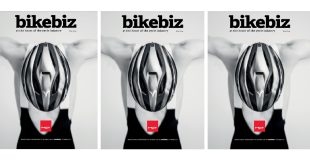Our executive editor Carlton Reid posed the question: "We’re selling lots of expensive bikes to the same few people. Should we be worried?"
Here’s a response from respected bike market guru Jay Tonwley:
In response to your question – relative to the US bicycle market, yes, you should.
If you attended Press Camp and in addition to enjoying the snow you may have found that the US road bike segment started declining last year, and continues to drop-this year. This in turn impacts the overall market by lowering average unit prices and the total value of bicycles sold.
There are a number of factors at play here, including the US bike shop channel focusing on the same enthusiast cluster of mostly upper income, white males who purchased multiple high-end bicycles through the ‘90s until around 2008-2009.
The used bike market took off during and after the great recession, and our American Bicyclist Study shows that used bicycles captured 26 percent of the total adult US bicycle market in 2013 – and is evenly spread across household income levels, meaning that the enthusiast cluster went for the savings of a used bike as quickly as all other US households in all income brackets.
Age and specifically the aging of the ‘baby boom’ generation has also impacted the road bike segment of the US market, as aging enthusiasts ride fewer miles and are aging out of the “sport” of bicycling, and simply “hurting” more when they do ride. As more baby boomers reduce their bicycling activity many also leave their road bike hanging and ride an upright bar urban or comfort bike, and some are turning to recumbents as they seek a way to continue riding a bicycle without the pain associated with aging.
In the US, the baby boom generation of about 79 million has given way to the Generation X of about 68 million around 2008-2009. Gen X now controls the US bicycle market and the “Sweet Spot” representing the best customers for new and used bicycles is between the ages of 30 and 38 or so. The problem is the bike business has continued to market, with no non-endemic advertising outreach since the great recession, just like it did prior to the great recession, when the Baby Boom generation still holding on the last bits of its control of the bike market. The problem is…there are about 11 per cent fewer Gen X than Baby Boomers, and if you continue marketing and advertising to a smaller Sweet Spot you will get smaller and less satisfying results – like a flat market, with no growth. Add to this a shift by the smaller Sweet Spot in bicycle category preferences, and you have a problem that is going to get more painful – unless you change the way you do business. So far the US bicycle business has not wrapped its head around the concept of changing the way it does business – something the UK bike business will hopefully do better at.
Jay Townley
Gluskin Townley Group
www.jaytownley.com
 BikeBiz Bicycle and cycling retail news
BikeBiz Bicycle and cycling retail news



